Technical features of the Tu-126 AWACS aircraft
In 1965, the first domestic airborne early warning aircraft, the Tu-126, entered service with the USSR Air Defense Forces. Machines of this type were supposed to carry out patrols in remote areas and complement the numerous ground-based radars. Special tasks and high requirements led to the fact that very interesting and progressive solutions for their time were used in the project.
A new class of technology
The development of the future Tu-126 began in 1958 as part of an extensive plan for the further development of air defense. Not all critical areas could deploy a sufficient number of radars with the desired characteristics, and therefore it was proposed to place the locator on an air platform. OKB-156 A.N. was appointed the lead contractor for the work. Tupolev. The development of the radio engineering complex was entrusted to several enterprises of the Ministry of Radio Industry.
In 1958-60. all requirements for the future aircraft were determined and several project options were developed. Then, in 1960, the final project was approved, according to which they soon began to build the first aircraft for testing. The construction was carried out at the Kuibyshev plant No. 18 (now Aviakor, Samara) and was completed in the fall of 1961. At the same time, the aircraft did not immediately receive a standard Liana radar system; he came out for testing with mock-ups of the equipment.
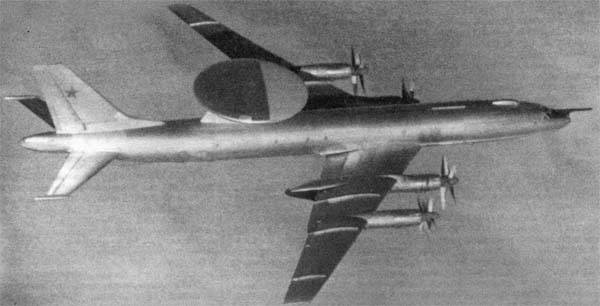
On January 23, 1962, an experimental Tu-126 completed its first flight. In the same year, a full-fledged Liana complex was put on the plane. In this configuration, the car was tested until the end of 1964. By this time, the Tu-126 was recommended for serial production, and the construction of new models began at plant No. 18.
In the spring of 1965, after all the necessary checks and procedures, the Tu-126 was officially put into service. Soon, equipment of this type began service in specially formed combat units. Until 1968, the armed forces received only eight production aircraft, as well as the first prototype.
Optimal platform
In accordance with the terms of reference, the AWACS aircraft was to be built on the existing serial air platform. Initially, the Tu-95 bomber or its Tu-96 variant was considered in this capacity. A similar version of the project was developed, but later it was concluded that it was difficult to place all the necessary equipment, jobs and recreational facilities inside the existing fuselage.
In 1960, it was decided to transfer the Liana complex to a more successful platform - the Tu-114 passenger liner. The larger diameter of the fuselage and the presence of large free volumes made it possible to solve all layout issues, as well as to improve certain characteristics in comparison with the previous version of the project. In particular, equipment cooling was improved, access to equipment blocks was simplified, etc.
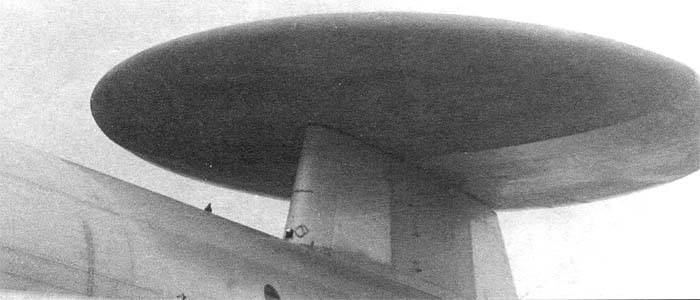
During the restructuring in the Tu-126, the airframe of the original Tu-114 underwent some modifications. Primarily. I had to strengthen the fuselage behind the wing - there was a pylon with a radar antenna. Changed the composition of on-board systems and avionics in accordance with the requirements of the armed forces. A large separate air intake for the radio equipment cooling system appeared under the central part of the fuselage.
A fundamental innovation for our aircraft industry was the placement of the radar antenna on a pylon above the fuselage. To optimize aerodynamics, the antenna itself was placed inside the fairing, as a result of which the superstructure acquired a characteristic mushroom shape.
The former passenger compartment has undergone a major restructuring. Its volume was divided into several compartments for different purposes. Equipment was placed in the nose and tail; in the 1st there were also places for operators. There was a reserve compartment in case of modernization of the radio engineering complex. In the center of the fuselage, a compartment was placed with rest areas for the Liana operators. The habitable compartments had to be equipped with radar radiation protection.
The power plant of the Tu-114 remained unchanged. Four NK-12MV turboprop engines allowed the aircraft to reach speeds of up to 790 km/h. The practical range reached 7 thousand km, and to increase it there was a refueling rod of the “hose-cone” system.
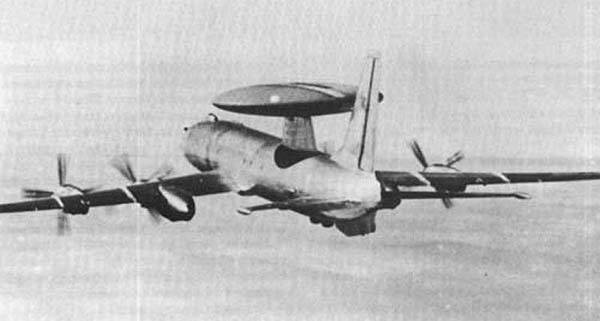
Radio engineering complex
The Tu-126 aircraft was equipped with the new Liana radar, made on the basis of the P-30 land station. It was built on a lamp element base, which affected the weight and dimensions of the structure. The station was divided into several blocks with placement in different compartments of the fuselage. She also received an antenna height of approx. 2 m and a diameter of more than 10 m, rotating at a speed of 10 rpm.
The Liana radar complex made it possible to monitor the air situation and search for surface targets. Detection of air targets against the background of the underlying surface, at least, was difficult. Observation of ground objects was not provided due to technical limitations. The station could detect aircraft at ranges up to 350 km. For large surface ships, the detection range reached 400 km.
Alternately with the radar, the onboard radio intelligence complex was supposed to work. With its help, the Tu-126 could detect ground, surface or air signal sources at distances up to 600 km, depending on their power.
The Tu-126 was supposed to transmit target data to air defense or naval command posts. fleet. The available telecode equipment provided communication at ranges up to 2 thousand km. The rejection of voice communications accelerated the transmission and processing of data at command posts and the subsequent control of air defense systems, aviation or missiles.
Tu-126 aircraft became one of the first carriers of the SPS-100 "Reseda" group protection electronic suppression station. This station operated in the centimeter range and was intended to suppress enemy radar and anti-aircraft systems.
two crew
In connection with the special tasks, the Tu-126 was controlled by two crews at once. First, the flight crew was responsible for piloting and controlling the aircraft as a whole. These pilots worked in a regular cockpit, taken from the Tu-114 practically unchanged. The second crew was supposed to work with radio equipment and solve targeted tasks.
Six operators were responsible for the operation of the radar and other systems. Their jobs, which control all the equipment, were in their own compartment immediately behind the cockpit. A replacement crew could participate in long patrol flights. Changing every few hours, two crews provided continuous duty for 16-18 hours.
However, the solution of operational tasks was associated with serious difficulties. From the point of view of convenience and comfort, the operator's cabin left much to be desired. She received insufficient heat and sound insulation. With idle engines and heating systems in the cockpit, it was cold, and in flight, the noise of propellers penetrated into the compartment, complemented by the sound of operating equipment. In combination with a rather complex work, all this led to excessive fatigue of the operators. The same was true of the "relaxation room" - it was not easy to use it and restore strength.
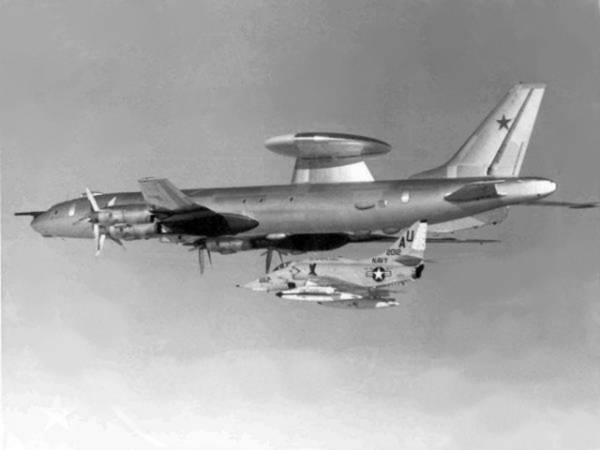
First of its kind
At the time of its appearance and entry into service, the Tu-126 was a modern and highly efficient machine. This AWACS aircraft showed fairly high flight performance, and its radio-technical complex met the requirements and tasks to be solved.
At the same time, there were also disadvantages. The Tu-126 was distinguished by the complexity and high cost of production and operation, due to special on-board equipment. There were certain technical and operational limitations. In addition, the aircraft was not very convenient for the crews and technical staff.
But in general, the Tu-126 with a complex of radio equipment turned out to be a very successful and timely acquisition for the Soviet air defense system. Only nine aircraft of this type were able to supplement the existing network of ground-based radars and expand the capabilities of the air defense and the Navy to combat a variety of targets. In the mid-sixties, all these opportunities were of particular importance - and for their sake they were ready to turn a blind eye to shortcomings.
The Tu-126 with Liana and other instruments remained in service and flew regularly on patrol for two decades. Their service ended only in the mid-eighties, when a new AWACS aircraft appeared - the modern A-50. During its creation, the experience of developing and operating existing Tu-126s was actively used. Thus, this aircraft not only solved the assigned tasks, but also laid the foundation for the whole direction.
- Ryabov Kirill
- Airwar.ru, US Department of Defense
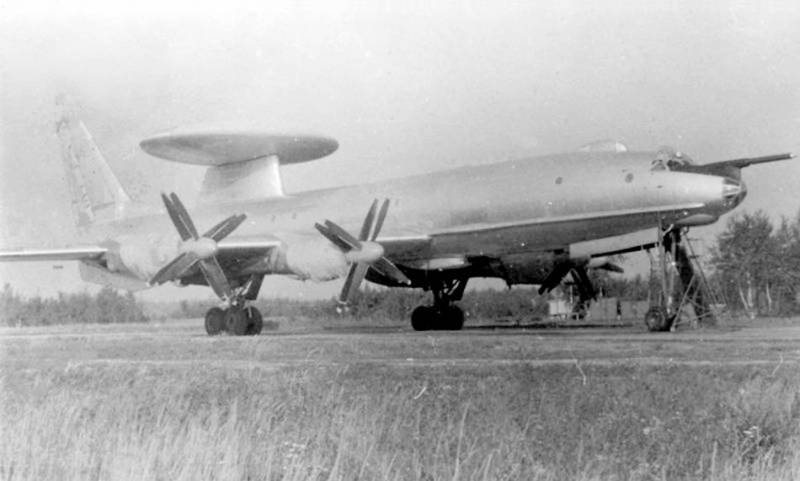
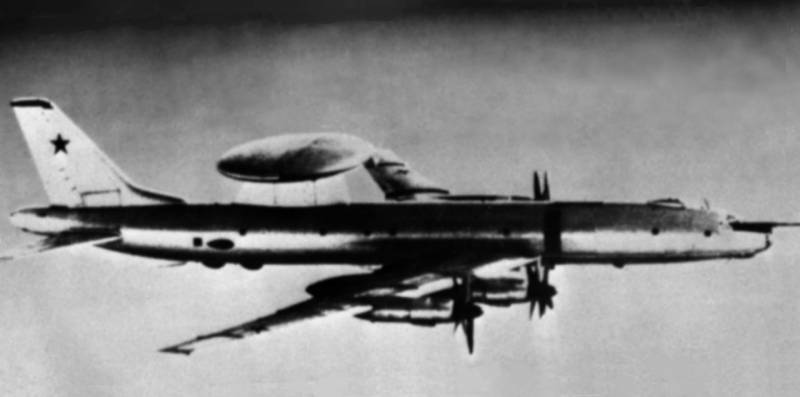
Information